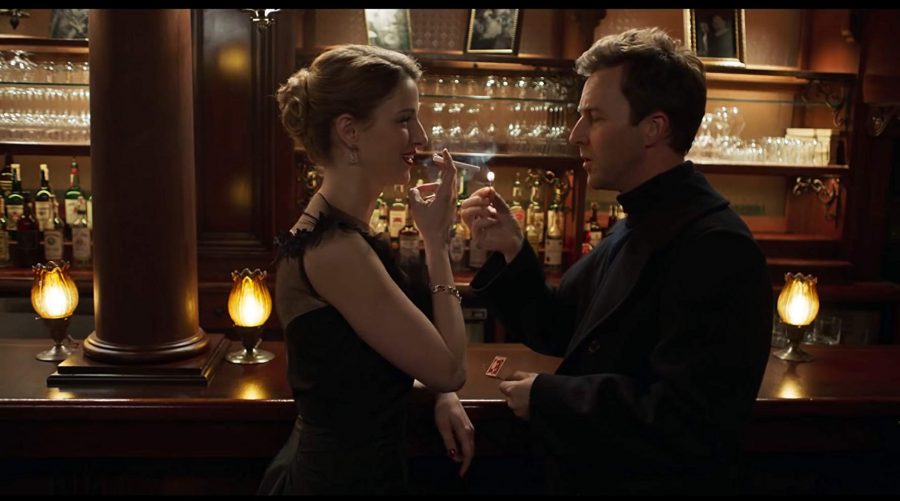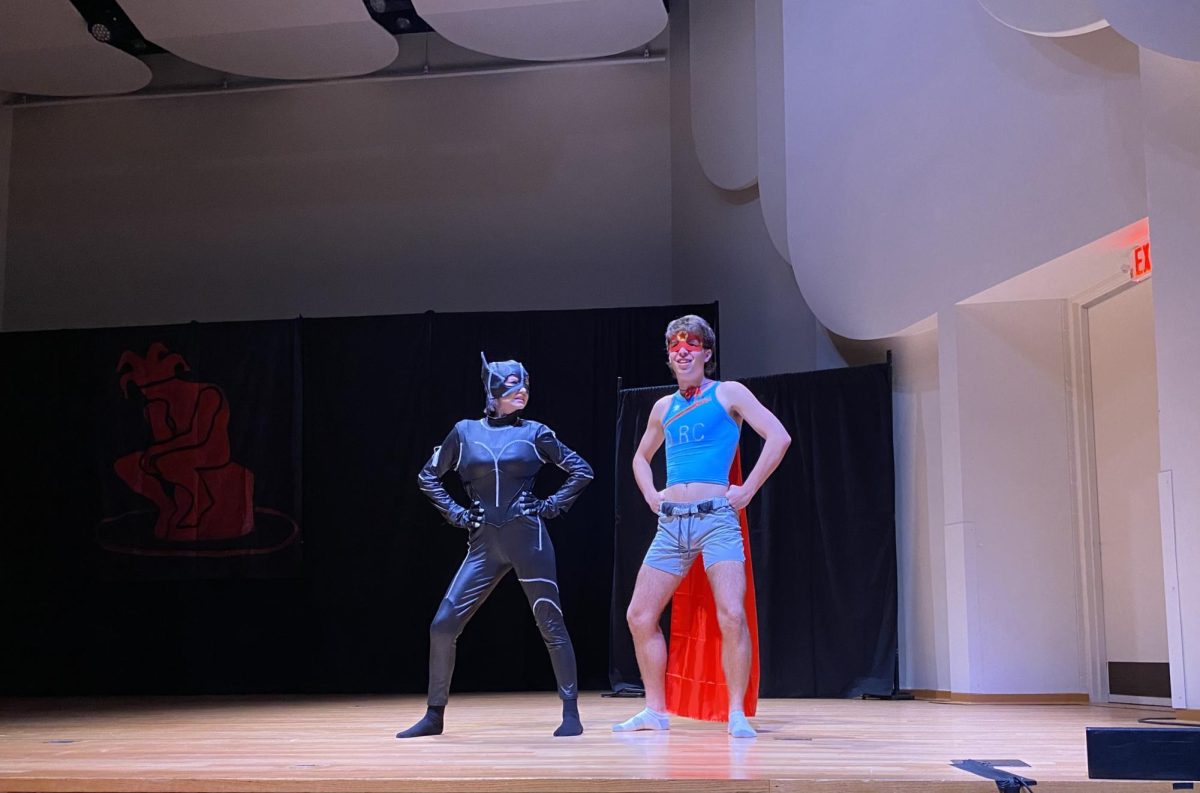Motherless Brooklyn, written for the screen and directed by Edward Norton, is a rare treat that blends canon with creativity. Based on Jonathan Lethem’s eponymous novel, the film instantiates itself in a noir tradition while embracing its own aesthetic departures from the films that preceded it. Lethem’s source material makes the film more garrulous than any of the consummate cool contained in an Elmore Leonard-Raymond Chandler affair, while its aesthetics still draw skillfully upon the canonical noir films of yore. Motherless Brooklyn feels and looks like a version of L.A. Confidential, but darker and sharper, as if written by Tarantino the tempered novelist, less concerned with overt pastiche than with understated sprawl. The film’s snappiness flavors its artistic depth, and the restraint it shows allows its brio more pucker, its spurts of emotion a sturdier clench.
Great artists make old stories seem new, and that’s exactly what Lethem, and now Norton, did with their respective projects. The film is acutely aware of its place in film history and is unavoidably haunted by ancestral energy, but it views precedent as a box of mutable tropes ripe for re-presentation. Though it’s possible to trace its visual and thematic progenitors, Motherless Brooklyn resists any trite, genealogical dissection in favor of more complicated absorption, what the late Harold Bloom would have called cinematic agon, the strong film-maker’s awareness, capitulation and eventual absorption of their predecessor’s great complexities into their own sui generis creation.
Norton’s film (and it is indeed his, distinctive and fiercely ambitious) follows Lionel Essrog (Norton), a gumshoe detective with Tourette’s (before the affliction’s trenchant symbolism was clinically caged by the medical term) in 1950s Brooklyn. His boss and friend, Frank Minna (Bruce Willis), dies within the opening minutes, leaving a complex web of government corruption and family drama to be unraveled as Essrog searches for his killers. With the (limited) help of the agency Minna ran, now under the auspices of Tony Vermonte (Bobby Canavale, underhanded and dubious), Essrog ventures into smoke-filled rooms and airless, echoing fiefdoms to piece together the vast plot.
The morass centers around Moses Randolph (Alec Baldwin), a Nietzschean urban planner who spins slum clearance as Promethean culture-creation, disguising his hegemony as ostensible beneficence. At one point, Moses’ disaffected brother, Paul (Willem Dafoe, ubiquitous gift that he’s become), says, quoting Emerson, that an institution is the length and shadow of one man, and his elder brother’s shadow keeps growing. Leading the resistance is Laura Rose (Gugu Mbatha-Raw, whose sensitive and sensual presence has gravitational pull), a city employee who unwittingly entangles herself in a dangerous drama with Essrog and others.
Essrog slips between miasmic night clubs and government galas, searching for the linchpin his late friend had found. Though not directly played for contemporary socio-political pressure-points, the film will no doubt be interpreted as an analogy for our fraught political present. While those themes are endemic to both the film and novel, both resist a symptomatic reading through aesthetic and intellectual innovation, forcing us to perceptualize the fuzzier notions floating above the shadowy exteriors.
Lethem’s novel imbued Essrog with twitchy brilliance, his uncontrollable outbursts flashing on the page with a perceptual madness that bordered on prophetic observation. That can’t work for Norton, or the film, because words on a page can believably drag on longer than human speech. Norton realizes this, and plays Essrog as a detective whose tics are less profound than distracting or crass, distracting others from his latent smarts rather than subconsciously building them up. His honest verbal gunfire strikes as either a sympathetic malady or cognitive limitation. This happens in Lethem’s novel, too, but the flicks of language were more drawn-out — brutal, observational, aphoristic — with a kind of David Foster Wallace-esque penchant for length and insight. I was curious how Norton would embody Essrog, and he does so with sincere intelligence. The tics are less to-the-bone and more ornamental for Norton’s character, which, when blended with the actor’s wry logic, makes Essrog sparkle with compassion.
But we must come around to Norton’s initially questionable Essrog. In a knockout scene at King Rooster, the oft-visited jazz club, Essrog and Laura slow-dance to jazz. At first, the prospect of controlled motion worries Norton, as does the immediate musical stimuli. He’s shy and volatile, ready to burst, but Mbatha-Raw, through gestures of subtle affection, slips him into an emotional channel. As they spin, the camera languidly circles, and Essrog’s mind, so often dismissed as defective, appears as a universe of patterned chaos: as jazz. For portions of the film, his mind mirrors the score — discordant, trickling, darting — but in this scene, we receive a different kind of musical comparison. The mind becomes playful, trumpeting improvisational language that’s felt instead of pre-meditatively thought. (The aesthetic register of this scene is itself worth the price of admission). Essrog later snags the scene’s antisocial beauty when he says to the trumpet man (Michael Kenneth Williams, smoldering with cool), “I twist and shout, at least you’ve got a horn to push it through.” It’s a sly, sad recognition that condenses the aesthetic experience into an unsatisfactory sentence, but the film’s continual ability to shrink and expand with epigrammatic grace peppers its heavier sections with wonderfully articulate energy.
And yet, the club scene not only contains a kind of daemonic interiority, but also a sensual intensity that twines physicality with philosophy. The gliding bodies, and Mbatha-Raw’s petting, foregrounds a more embodied symbiosis. Apart from Essrog’s mental-musical likeness, he and Laura’s communion reminds us of a dreamlike quote from Louise Erdrich, who says “the angels in our body make us foreign to ourselves when touching.” Both characters, in this thawing embrace, in a scene of musical metonymy, visual envelopment and physical sensitivity, lose themselves in the song of the other. The film, here, becomes transcendent, something purely cinematic and aesthetic, altering perception and transferring a kind of inarticulate, human wisdom. It’s touching (literally), and perfectly choreographed in a long-take of honeyed bliss. The sequence is jaw-droppingly beautiful, simultaneously raw and artificial, constructed so perfectly through gestural harmony that — I’ll say it again — it alone is worth the price of admission.










